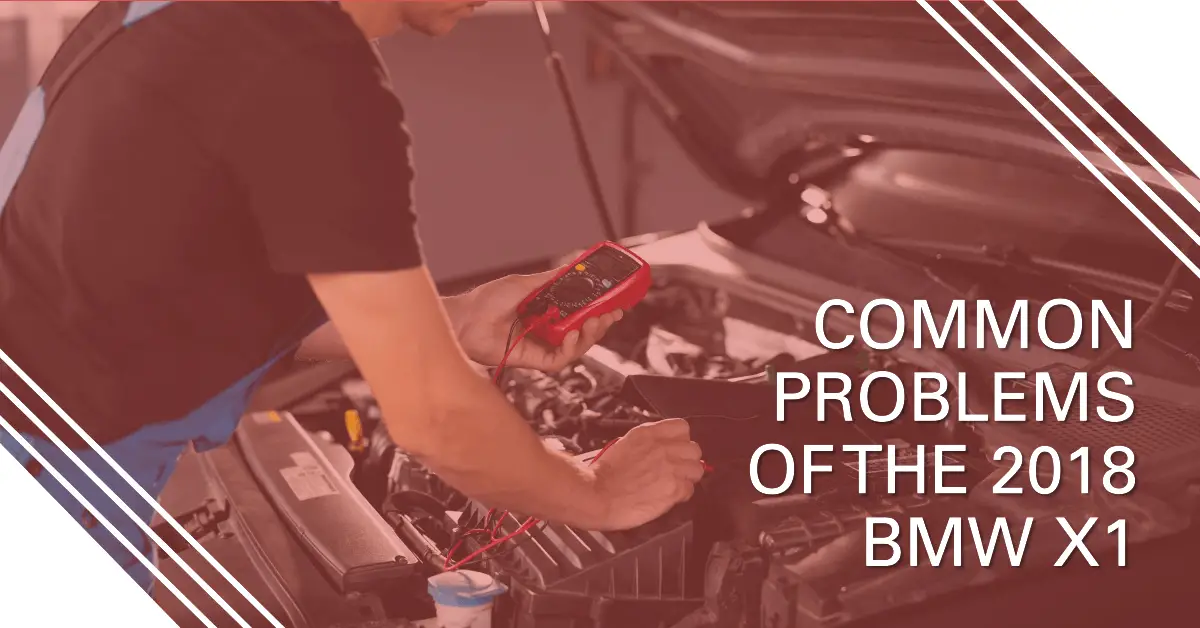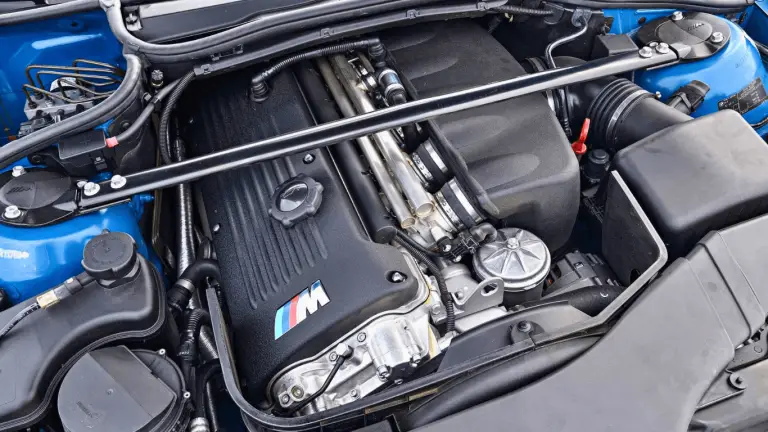MW X1: Years to Avoid for a Hassle-Free Ride
Are you in the market for a used BMW X1? The BMW X1 is one of the most popular compact luxury SUVs thanks to its sporty handling, upscale interior, and the prestige of the BMW badge. However, not all model years of the X1 are created equal when it comes to reliability, maintenance costs, and avoiding frustrating issues.
So which BMW X1 model years should you avoid if you want a hassle-free used vehicle?
The short answer is you’ll want to steer clear of most X1 models before 2018. Keep reading to learn why the first-generation X1s have more problems, what issues plague even the 2016 refreshed models, and why 2018 and newer are your safest bets. I’ll also provide tips on how to inspect any used X1 before buying to avoid later headaches.
In this detailed guide, you’ll learn:
- The costly defects with the first-generation BMW X1 models from 2009-2015
- Why the 2016 refresh still didn’t resolve underlying issues
- How 2018 and newer X1s finally overcame reliability problems
- What to look for in a pre-purchase inspection on any used model
- When an older X1 can still be a good buy if well-maintained
Let’s start at the beginning and see why you’re better off avoiding most early model year BMW X1s.
The Costly First Generation X1 (2009-2015)
The first-generation BMW X1 spanned model years 2009 through 2015. This early X1 was BMW’s first foray into the growing compact luxury crossover segment. While these original X1s had BMW’s renowned driving dynamics and crisp handling, they were plagued by a number of frustrating defects.
Some of the most common issues with 2009-2015 BMW X1 models include:
- Engine oil leaks: A huge complaint from owners of early X1s was oil leaks from the valve cover gasket, oil filter housing gasket, and other engine seals. These leaks often start early in the vehicle’s life and can be an ongoing headache.
- Faulty fuel pumps: The high pressure fuel pumps in many first-gen X1 models fail prematurely, often leaving drivers stranded. Replacing them can cost upwards of $1,000.
- Transmission problems: Some early X1s suffered rough shifting, jerky engagement, and premature transmission failures. The most common issues are with the 8-speed automatic gearbox.
- Expensive turbocharger replacements: Turbo failures are common, sometimes occurring with less than 50,000 miles on the odometer. Replacing the turbochargers often costs $1,500 or more in parts and labor.
- Electrical glitches: From flickering dashboard lights to wonky sensors, first-gen X1 electrical systems can be troublesome. Gremlins in the wiring harness and faulty grounding are often to blame.
In online forums, many owners of 2009 to 2015 X1 models report excessive oil consumption, needing to add a quart of oil in between oil changes. This points to potential engine wear and larger looming issues. They also complain of the need for frequent (and expensive) trips to the dealer for various engine repairs and replacements.
While proper maintenance and care can prolong the life of these early X1s, their well-documented engine, fuel system, and electrical defects make models from 2009 through 2015 risky purchases. Unless you’re handy with a wrench or have deep pockets, it’s smart to avoid the first-generation.
The 2016 Refresh Still Had Defects
In 2016, BMW gave the X1 a mid-cycle refresh. This included updated exterior styling, revised interior trims, and new engine options including a turbocharged 3-cylinder. However, even the refreshed 2016 X1 seems to suffer from some of the same nagging issues as the first-gen models:
- Oil leaks: Despite a new engine design, many 2016 X1 owners still report problems with oil leaks from the valve cover, oil filter housing, and engine seals similar to previous model years.
- Cooling system problems: Faulty water pumps and thermostats that fail prematurely have left some 2016 X1 drivers dealing with overheating. Replacing the water pump can cost $700 or more.
- Turbo failures: Again the turbochargers are a weak spot, with premature turbo failures continuing to occur on 2016 model year X1s. Some have needed a new turbo with as little as 30,000 miles.
- Excess oil consumption: While not as bad as early X1s, the 2016 refresh still seems to burn through oil quickly between changes. Owners add about a quart in between the recommended intervals.
While not quite as severe as the first generation, 2016 model year X1s have continuing issues with engine oil leaks, cooling systems, turbochargers, and oil consumption that make them risky used purchases. The 2016 model year is improved over previous years but still presents costly headaches for owners.
2018 and Newer Are the Safest Bets
Fortunately, it seems BMW finally resolved the plaguing engine and oil issues with 2018 and newer X1 models. Owners of 2018+ X1s report far fewer visits needed for expensive turbocharger replacements, oil leaks, and other engine repairs.
Here’s a look at why 2018 and newer X1s have proven to be the most reliable and problem-free:
- No more excessive oil consumption: BMW seems to have addressed the oil burning issues, with 2018+ models only needing topping off right before the 10k mile oil change intervals.
- Far fewer turbo replacements: The new B46/B48 turbocharged engines hold up better, only needing occasional turbo replacements past 100k miles in severe use cases.
- Improved cooling systems: New water pumps and thermostats hold up better, reducing overheating issues.
- Resolution of oil leaks: The latest engines keep oil where it belongs, with far fewer leaks reported from engine gaskets and seals.
While no vehicle is problem-free, 2018 and newer X1 models have the clear advantage when it comes to reliability and minimizing headaches for owners. For the best shot at hassle-free used ownership, stick with 2018 or newer.
Do a Pre-Purchase Inspection Before Buying
To avoid buying an X1 prone to problems, it’s smart to pay for a pre-purchase inspection (PPI) by a trusted independent mechanic before purchasing. A thorough PPI on any used X1 can uncover issues like:
- Engine oil leaks: The mechanic should check under the hood for signs of oil leaks from gaskets and seals, and determine if repairs might be needed. Leaks often appear first as oil stains and residue around engine components.
- Service records for the turbochargers: Ask to see maintenance records to check if the turbochargers have been replaced. Turbo failures usually happen before 100k miles on early X1s.
- Symptoms of excessive oil consumption: Look for signs of low oil level or sludgy oil, which can indicate oil burning issues. The owner can tell you how often they need to top off oil between changes.
- Damage from overheating: A combustion leak test can check for signs of head gasket failure. Inspect hoses, radiator, water pump and thermostat for any needed cooling system repairs.
This detailed inspection from a qualified mechanic allows you to make an informed decision before purchasing any used X1. They’ll be able to assess the current health of the engine, transmission, and other components to avoid those frustrating repair bills and trips to the shop later on.
Well-Maintained Examples Can Still Be Good Buys
If you find an older first-generation X1 in good condition don’t rule it out automatically. Well-maintained early X1s with documented service histories can still be solid used buys. Here are some tips for assessing older models:
- Carefully review maintenance records: Ask to see the full history of repairs and maintenance. Regular oil changes, fluid flushes, and repairs when needed are good signs.
- Ask about recent repairs: A recent timing chain replacement, new turbochargers, or cooling system overhaul can add peace of mind.
- Take it for a thorough test drive: Listen and feel for any odd noises, vibrations or warning lights that can signal issues. Test acceleration and shifting.
- Get a PPI inspection: Don’t skip the pre-purchase inspection. A mechanic can best assess wear and identify needed repairs.
If everything checks out and recent repairs address common issues, an older X1 can still be a good value as long as you go into it with realistic expectations around maintenance. But sticking with a 2018 or newer model is still the safest bet for minimal headaches.
The Takeaway
To summarize, you’ll want to avoid most 2009-2017 BMW X1 models if you’re looking for a worry-free used vehicle with minimal expensive repairs needed. Engine oil leaks, premature turbocharger replacements, cooling system issues, and excessive oil consumption have plagued these model years.
2018 and newer X1s have proven more reliable and better resolved these early defects. But no used vehicle is problem-free, so do your due diligence with a pre-purchase inspection and review of maintenance on any X1 you’re considering. Look for well-documented service histories on older models.
While the early years have more potential issues, a properly maintained first-generation X1 can still be a good buy for the right owner. But sticking with a 2018+ model gives you the best shot at carefree used ownership. Now you can shop for a used BMW X1 with confidence, knowing which years to target or avoid!







